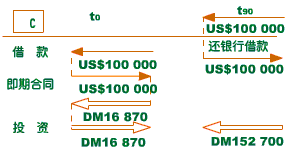2) central
中央
1.
The relations between the central and local government in the Song Dynasty;
宋代地方与中央之关系问题研究
2.
In the later period of the civil war, the Communist Party of China got final victory and the building-up of countrywide regime of became the agenda, and the construction of Central People s Government has proposed Chinese Communist Party’s agenda.
内战后期,中国共产党取得最后胜利并建立全国性政权已基本成为定局,筹建中央人民政府已提上中共的议事日程。
3.
The centripetal force is crucially vital of the relationship between the frontier and the central,in that various nations have worked together to construct one country ——the People s Republic China.
向心力是边疆与中央政治关系的关键所在,其原因在于各民族共同建构了中国。
3) The Central government
中央
1.
The article focus on the issue how was Hebei under the central government in the Sui Dynasty.
在中央一统观念的支配下,对河北的治理成为隋朝中央政府的重要任务之一。
4) central government
中央
1.
Probing into local and central government s relation under "new SOE management system";
“新国资管理体制”下中央与地方关系探析
2.
The Allocation of Executive Powers between Central Government and Local Government;
中央与地方行政权力配置研究
3.
The decline of the central government brought about the rise of local powers such as Xiang Clique,Huai Clique,and Beiyang Clique during the later Qing Dynasty.
晚清中央政权自身的衰落导致了湘系、淮系、北洋系地方势力的崛起;财权、兵权、外交权下移,使中央政府丧失了政治权威和统治能力。
5) center
中央
1.
The economic relationship between center and national autonomous regions mainly includes resources sharing, wealth po.
应规范、完善处理中央与民族自治地方经济关系的法律,并以此为依据,严格执行。
2.
It is different and emphasized particularly for different states in various periods to choose the mode of relationship between center and region.
不同国家在不同时期对于中央与地方关系的模式选择都会有所不同和有所侧重。
6) the central
中央
1.
In political practice, restrictive factors are mainly as follows: the source mode of the state power, the mode of power division between the central and the local, the system of economic movement, the system of finance, the organizational system and ministerial mode of ministerial party and the degree of ruling by law, and etc.
在政治实践中,制约和影响中央与民族自治地方权力分配和民族自治地方自治权行使的因素很多,在宏观上主要有国家权力来源的论证方式、中央与地方权力划分的方式、经济运行体制、财政体制、执政党组织体制和执政方式、国家的法治化程度等。
2.
The generation, development and evolution of the system of CISHI from the West Han Dynasty to the Sui Dynasty reflected the change of the relationship between the central and the local authorities in the feudal society .
西汉至隋刺史制度的产生、发展及变化,集中反映了封建中央集权政府与地方政府关系的演变过程,并从这一时期二者关系变化可探索出地方行政体制演变的规律。
参考词条
补充资料:BSI法
具体操作步骤
拥有应收账款的出口商,为了防止汇率变动,先借入与应收外汇等值的外币(以此消除时间风险);同时,通过即期交易把外币兑换成本币(以此消除价值风险);然后,将本币存入银行或进行投资,以投资收益来贴补借款利息和其他费用。届时应收款到期,就以外汇归还银行贷款。可见,利用BSI法,从理论上讲,可完全消除外汇风险。
[编辑]
BSI法在应付帐款中的运用
例如,德国C公司在90天后有一笔US$100 000的应收款。为防止将来收汇时美元贬值带来损失,该公司向银行借入90天期限的US$100 000借款。
设外汇市场的即期汇率为US$1=DMl.6870÷1.6880,该公司借款后用美元在外汇市场兑换成本币DMl6 870,随即将所得马克进行90天的投资。90天后,C公司以收回的US$100 000应收款归还银行贷款。

图1
由图1可见,C公司在签订贸易合同时,通过借款、即期外汇交易和投资三种方法的综合运用,外汇风险消除。90天后收回应收账款US$100 000,正好用来归还银行借款(以上操作均未考虑利息因素)。
在签订贸易合同后,进口商借入相应数量的本币,同时以此购买结算时的货币,然后以这笔外币在国际金融市场上做相应期限的短期投资。付款期限到期时,进口商收回外币投资并向出口商支付货款。当然,若进口商进行外币投资的收益低于本币借款利息成本,进口商则付出了防范风险的代价,但这种代价的数额是极其有限的。在这种方法中,企业把借来的本币兑换成外币,消除了价值风险;而把未来的外币应付账款用于投资,又改变了外汇风险的时间结构。
同上例,若德国E公司改用BSI法避险,则可从银行借入相应的本币。若即期外币市场汇率为US$1=DMl.6310÷1.6340,则可借入DM81 700(DMl.6340÷US$1×US$50 000),用于购买US$50 000并进行为期90天的投资,投资期满,收回投资(暂不考虑投资收益),支付美元借款。其过程如图2所示。

图2
用BSI法消除外汇应付款和应收款的原理一样,但币种的操作顺序有别。前者借款是借本币,而后者借款是借外币;前者投资用外币,后者投资用本币。由图2可知,BSI法使流入和流出的外币完全抵消,消除了外汇风险。
说明:补充资料仅用于学习参考,请勿用于其它任何用途。

